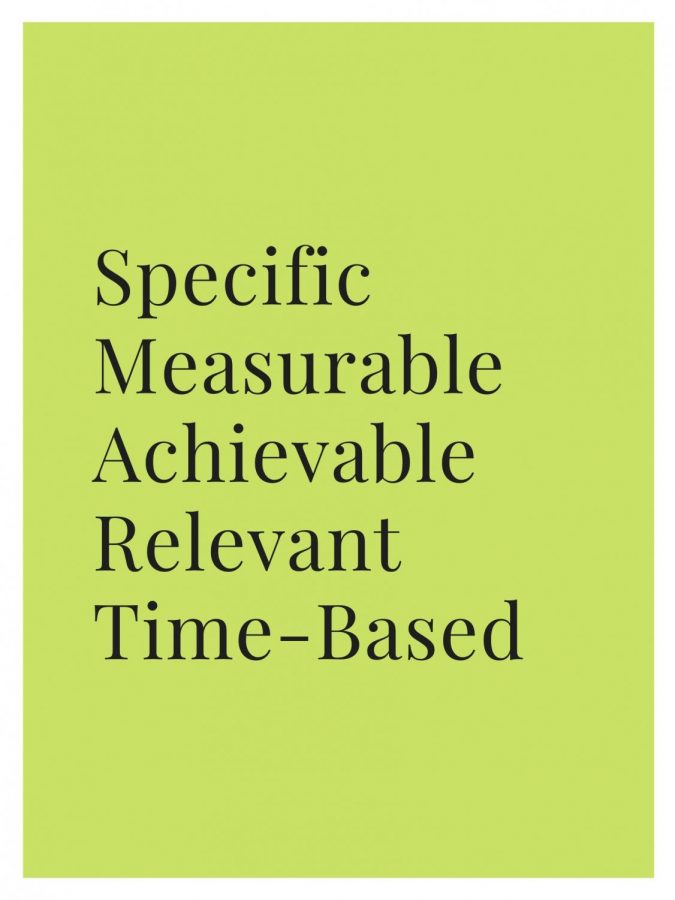New Year’s Resolutions: How to Set Effective Goals
It’s been 38 days since the start of 2020. Did you make a New Year’s resolution? Have you kept it up? If you are like the other 80% of Americans, it’s likely that your answer to that is no, as only 8% of New Year’s Resolutions are followed through past January 17th. But that’s okay, setting goals is difficult and halting bad habits is even more of a challenge.
Why do we make New Year’s Resolutions? Well, according to recent studies, people tend to gain more motivation when beginning their journey on a temporal landmark. The start of a new year (and especially a new decade) is a significant event that gives people a whole year to transform their habits, thus resulting in a spark of inspired productivity. This has been dubbed as the “fresh start effect.”
Although the likelihood of actually maintaining goals is low, a study published in the Journal of Clinical Psychology found that those who make New Year’s Resolutions are 10 times more likely to achieve their goals than those who don’t bother to set them. So, it’s not all bad. But, how can we raise that 8% to say, a 20% or even 50%? SMART goals are a great template you can use to achieve your New Year’s Resolution.
SMART stands for Specific, Measurable, Achievable, Relevant, and Time-based.
Specific:
Specific goals have answers to the five “W” questions.
Who? – Who is involved in the goal and who will it benefit?
What? – What is it that I want to accomplish?
When? – When do I want to achieve this goal by and how much time should I set aside?
Where? – Where can I go or where do I have to go to achieve this goal?
Why? – What is my true purpose and desire in achieving this goal?
Once you answer these questions, there is no more planning or wondering left to do. Having a specific goal allows you to avoid worrying about the logistics and focus on reaching your target.
Measurable:
Goals must be measurable. Otherwise it becomes easy to lose track and consequently, lose interest. An indicator of progress is crucial and will help you note your headway in achieving your goal. For instance, “I want to visit the gym 10 times each month, and lose 1 pound of body fat every week” is going to be much more attainable than “I want to lose weight.”
Achievable:
Goals that cannot be achieved are not goals, but dreams. Even if you wish you could travel to two more countries this year or save up $40,000 for a brand-new Tesla, overly-ambitious goals are unmanageable. The inability to complete extravagant goals like these may make you feel as though you’ve failed or are hopeless, which might set you back even further. The key is to challenge yourself, but to be reasonable, too. Account for your current resources and the time you have available to you.
Relevant:
Make your goals relevant to your passions. Goals regarding topics that you have a passion (and maybe even a talent) for will be more appealing to work for and will make the entire process easier. If you’re interested in music and instruments, maybe make your goal about improving the range of your voice, or learning to play a new instrument.
Time-based:
Create a deadline for your goal. An open-ended goal will always leave you feeling like you can just “do it later” When you’re on a schedule or time-table, you will feel motivational pressure to complete your goals.
SMART goals are a great key to creating achievable goals and the acronym is easy to remember, too!
Sources Cited:
Cherry, Kendra. “How to Stick to Your New Year’s Resolutions This Year.” Verywell Mind, Verywell Mind, 17 Jan. 2020, www.verywellmind.com/how-to-keep-your-new-years-resolutions-2795719.
“SMART Goal – Definition, Guide, and Importance of Goal Setting.” Corporate Finance Institute, corporatefinanceinstitute.com/resources/knowledge/other/smart-goal/.

N.K. Chand was born and raised in San Jose, CA. She is a senior at Lincoln High School. She has two pit-bulls, Nala and Patron, and a cat, Toro. She has...















